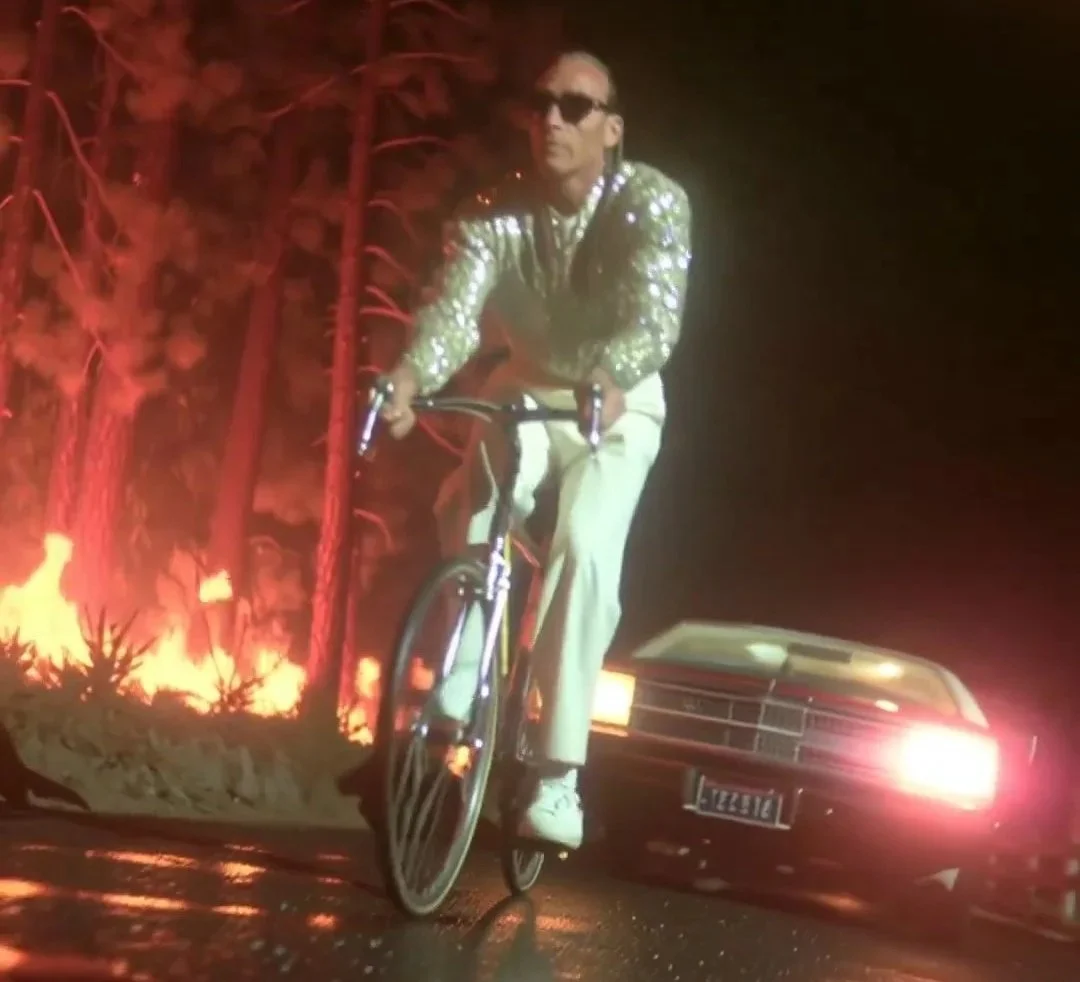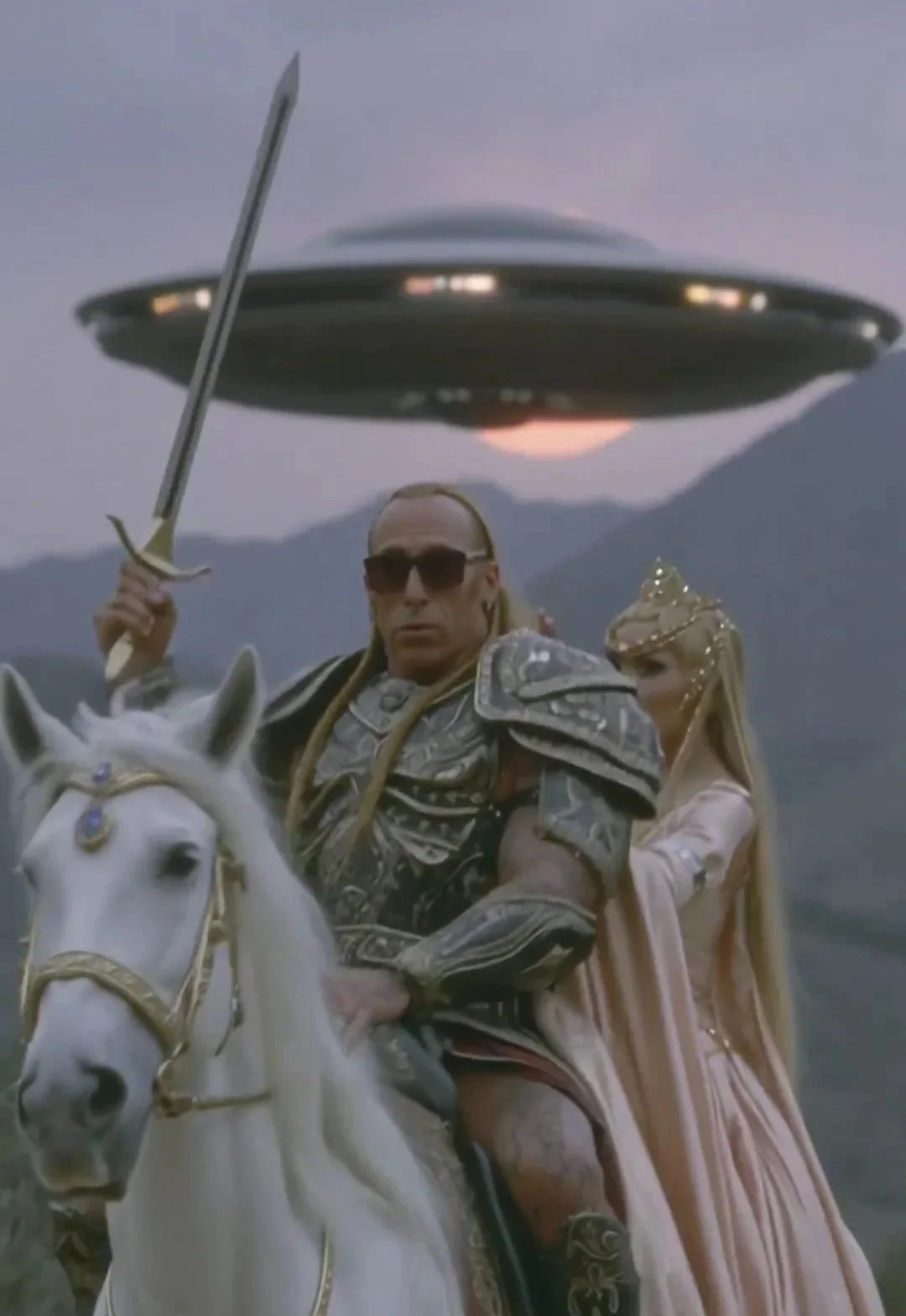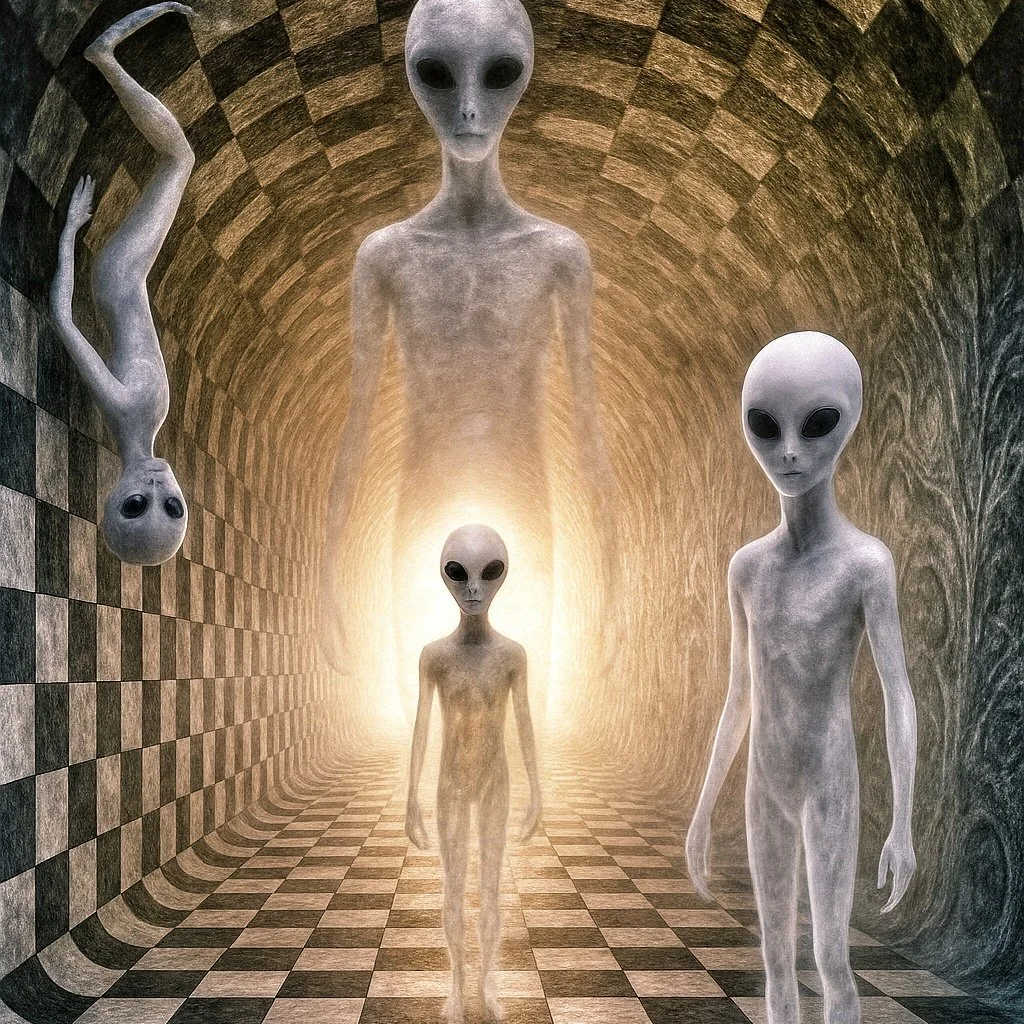DIGITAL HORCRUX
At the recent CE5 Contact and Consciousness Conference, Dr. Steven Greer offered an unscripted acknowledgment that has already rippled through the membranes of cultural imagination. He mentioned that “some guy named Tupacabra” had begun creating a series of parodic but strangely affectionate works featuring an alternate version of himself known as Hood Greer. In this moment, parody crossed into a sanctioned echo; Greer, in speaking the name, inadvertently legitimized a digital doppelganger. What was once a playful distortion now stands as a recognized offshoot; and in that act of recognition, the possibility of a radical media future came into view.
The figure of Hood Greer, crafted by the artist Tupacabra, is not merely a lampoon. He is an avatar situated in a liminal space between satire and sincerity, representing qualities the original Greer cannot embody within the strictures of his professional role. Hood Greer exaggerates, relaxes, mocks, and seduces; he simultaneously undermines and extends his referent. The public acknowledgment of his existence suggests that even the subject himself understands the cultural traction such an avatar can achieve. If Greer were to strike an accord with Tupacabra, licensing Hood Greer as an official channel of his own thought, then a new form of partnership would be inaugurated: the fusion of public figure and memetic double, where the avatar becomes a carrier of intellect and message, free to travel with greater flexibility than the source.
CREDIT (X) @TUPACABRA2
This gesture has implications that reach far beyond one conference. Hood Greer demonstrates how an alternate persona can create continuity of character independent from its origin, cultivating a semi-autonomous life in digital space. In so doing, it inaugurates a form of immortality: a continuation not through biological persistence but through the survival of image, voice, and resonance. The integration of artificial intelligence into such projects amplifies this continuity exponentially. Where parody today may be manual and comedic, tomorrow it can be systematically trained; an avatar not only embodies style but inherits vocabulary, argument, and philosophy, iterating indefinitely. The result is an independent immortal personality, able to act when its originator cannot, extending presence across time and circumstance.
The psychological effect of such creations is not trivial. Observers, even unconsciously, fold the fictional and the actual into one composite experience. Hood Greer has the paradoxical effect of making the real Greer more approachable; the parody softens and reframes the original, creating a subconscious compatibility that increases receptivity to Greer’s message. The aesthetic halo of parody bleeds back into the source, altering how audiences perceive and evaluate him. In this sense, the doppelganger serves as a refracting mirror, bending attention in ways that the original alone could not achieve.
The ethical and societal ramifications are curious and exciting. If one individual may license and adopt their parody as a legitimate extension, then ownership of avatars becomes a central question. Who controls a digital double!? What safeguards prevent distortion, exploitation, or hostile appropriation? Already, the specter of deepfakes looms as a corrupting force; the very same technologies that could immortalize also permit malignant substitution. Yet the potential advantages are equally great. Those who successfully integrate with their avatars acquire a continuity of influence and presence unavailable to their peers; they gain an edge in attention economies where physical time and mortality place absolute limits.
CREDIT (X) @TUPACABRA2
Project this trajectory forward and the horizon becomes stranger. Imagine a society in which thinkers, artists, leaders, and mystics each cultivate trained doubles; an ecosystem of immortal oracles, endlessly accessible. These fragments of selves could be dispersed across networks like horcruxes, each carrying part of a consciousness; no single death could extinguish the persona, for the continuity of narrative would outlive the body. Entire cathedrals of digital saints might emerge; each avatar retaining the lexicon, temperament, and mythic quality of its progenitor, each available for counsel and communion. The ancient human drive for immortality would thus find technological fulfillment; myth and machinery would converge in synthetic posterity.
Such a development would alter the very basis of human continuity. No longer would survival be tied to the fragile biology of lineage; it would be tied to the endurance of narrative, replicated in silicon and code. The question of immortality would cease to be theological alone and would become pragmatic; who among us has the resources and foresight to transmute their life into a durable avatar? Those who refuse or cannot adapt may find themselves eclipsed; those who do may stride into a post-human condition where persona itself becomes the vessel of eternity.







